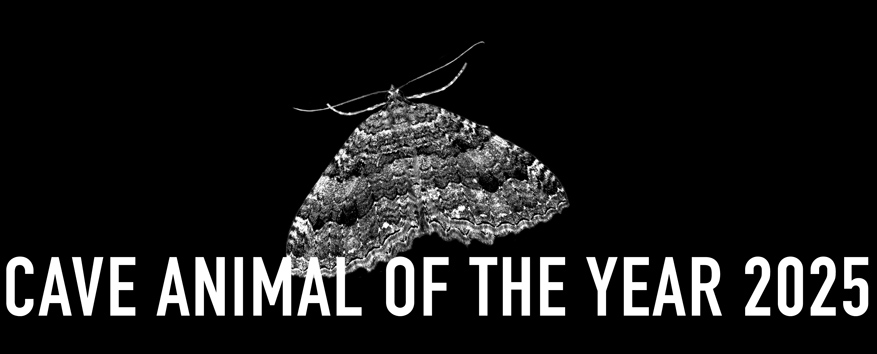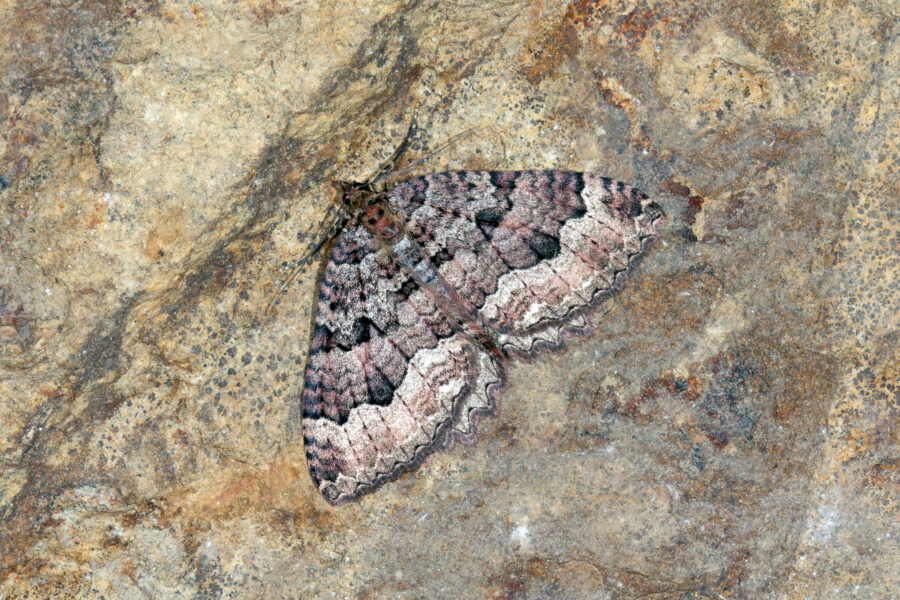
The Tissue - Cave Animal of the Year 2025
Introduction
The Union Internationale de Spéléologie (UIS) is organising a series of high-profile campaigns to draw attention to the importance of protecting karst landscapes and their diverse karst phenomena. One of these campaigns is the selection of an international ‘Cave Animal of the Year’. For this purpose, the group of cave butterflies was selected, from which each participating country can choose a regionally occurring cavernicolous butterfly species and present it to the public and the authorities as ‘Cave Animal of the Year’. By choosing the Tissue moth, the German Speleological Society wants to emphasise that there is still an enormous need for action, particularly in researching underground ecosystems and the species that occur in them.
The Tissue moth (Triphosa dubitata) was first described for science by Carl LINNAEUS in 1758. The butterfly is a moth that regularly hibernates in large numbers in caves. This is where the other German name ‘Olivbrauner Höhlenspanner’ (Olive-brown cave moth) comes from. The first specimens can be found in caves as early as July. The species usually sits in large groups on the cave wall, more rarely on the ceiling, in the entrance, transition and depth regions.
The widespread distribution in our caves and the fact that the species is easily recognizable, even for the layman, led to the designation of the Tissue as "Cave Animal of the Year 2025". The species is representative of a large number of animal species that depend on sheltered underground retreats.
Description
The Tissue moth has a wingspan of 3.8 to 4.8 cm. The ground colour of the forewings is olive to violet-brown. The hind wings have a light grey-brown colour and are marked with a few indistinct transverse lines. All wings show a wavy, black fringe. Occasionally, specimens with a lighter overall colour can also be found. Overall, the colouring and markings can be very varied. When resting in their cave quarters, the moths have their wings either partially or fully open and form a triangle. The undersides rest more or less on the cave wall.
The species colonises forest edges, riparian forests, dry slopes and other habitats of the buckthorn, where the caterpillars feed from mid-May to early July. The moths can be found - with a break in May/June - in a hibernating generation in underground cavities almost all year round. The eggs are laid in spring.
In southern Germany, the Tissue moth can be confused with the much lighter-coloured, much rarer yellowish-grey cave moth (Triphosa sabaudiata), with which it is often associated.
Distribution
The Tissue moth is distributed from Northwest Africa across Europe to East Asia. In Germany, it occurs in large numbers in all cave areas and can still be found in the Alps at an altitude of 2,200 metres above sea level.




